How to Choose Your Radar Detector
The Purpose of a Radar Detector
First, you must understand that the purpose of a radar detector, regardless of the manufacturer's claims, is to protect the user from getting a deserved or undeserved speeding ticket, by a police officer using a radar gun.
Radar Detectors are NOT Cop Detectors!
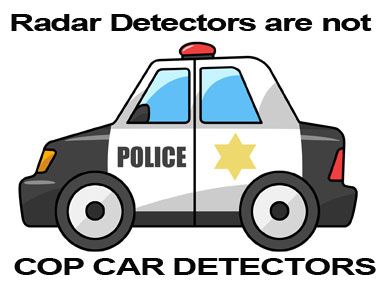
One of the most frequent comments I receive from new radar detector users goes something like this:
“I purchased a radar detector a few days ago and have driven past a number of cops and my detector never alerted. Is there something wrong with my detector?” No, there is nothing wrong with your radar detector.
Your radar detector is designed to alert to radar and laser signals it receives, it is not a cop car detector.
Most patrol cars do not have radar guns installed in them unless they are assigned to traffic duty. Also, if the officer does have a radar gun, it may not be turned on.
Your radar detector will not alert in these situations.
Radar Detectors SUCK at Detecting Laser!
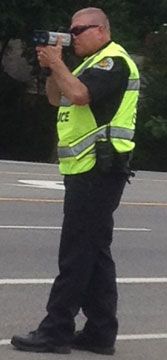
Each day more and more police departments moving to laser (lidar) enforcement instead of using radar guns.
Laser guns transmit a beam of infrared light at a wavelength of 904nm.
This invisible light beam is only 18 inches wide at 500 feet and gets smaller and smaller as you approach the officer.
When a police officer uses laser they aim this narrow light beam at a reflective area on your car like your headlamps or front license plate.
Therefore, your radar detector would NEVER alert unless it was within this narrow beam of light.
Because of this, you need you need either a laser jammer and/or the
Veil Stealth Coating to protect yourself from these laser attacks.
Back To Top
Performance is King
It doesn't matter how many bells and whistles it has, or how stylish it is – if a radar detector doesn't perform, it's not worth owning. – Radar Roy
There are tons of radar detectors out there that are loaded with many types of features, look good on your dash and are user friendly.
Unfortunately, most of these detectors suck at detecting radar!
Because of this, it is important to know and understand the features and specifications of the radar detector you are buying.
Radar/Laser Bands
In North America there are only three radar bands and one laser band police use in traffic enforcement:
|
X Band:
|
This is the oldest radar band, used by police in N. J. several
locations in Ohio, South Dakota (Mount Rushmore) and in Mississippi.
Chances are, unless you are in one of those states, you can ignore this
alert. False alerts on this band are high to extreme (depending upon
detector model and driving location)
|
|
K Band:
|
Thirty percent of the radar guns manufactured today use this band. False alerts on this band are moderate
|
|
KA Band:
|
Seventy percent of the radar guns manufactured today use this band. False alerts are low to moderate.
|
|
Laser:
|
Growing in popularity with police departments nationwide, false
alerts are low. When false alerts are encountered, normally they are
reflection of bright sunlight, or wind shear monitors at airports or
weather stations
|
What Happened to all Those Other 14 Bands Cobra Says That Are Used?
One of Cobra’s marketing ploys is to slice up these three radar bands and one laser band into 8 bands and then sprinkle in their claims that their detectors can also detect POP radar, Spectre, Strobe Alert and what ever else their marketing department can throw in.
These deceptive practices employed by Cobra, along with their detector's horrible performance, are the main reason I recommend avoiding their products.
False Alerts is the #1 Complaint from Radar Detector Users!
Poor filtering of false alerts is the #1 complaint that I hear from my customers.
A cheap radar detector will alert you to everything from the closest grocery store door opener, to the vehicle with a cheap radar detector.
I experienced this myself on my last run during the coast-to-coast Fireball rally when I was asked to test Cobra’s XRS detector on Interstate 10.
The detector was so annoying that within 15 minutes I unplugged the unit and tossed it out of the window!
You can avoid this common mistake many first time radar detectors make by spending a few more dollars and getting a higher end detector such as the Escort Max 360 or Beltronics GT-7 which both use next generation fully digital signal processing to reduce false alerts from the K-band automotive collision avoidance systems which are so common today and can render lesser detectors essentially unusable on the highway.
Long Range is a Must!
One of the most common tactics police use in traffic radar enforcement is using Instant On mode. (Not to be confused with POP Mode)
Basically what an officer does is lie in wait till he visually sees a vehicle he feels is speeding, then he aims his gun at the vehicle and takes the gun out of standby mode.
If you have a low range radar detector, all it’s doing at this point is telling you to pull over because you’ve been caught.
As a result, selecting a radar detector that has at least 7 times the capture rate of a police radar gun and having what I call a “rabbit” in front of you is a MUST if you want to avoid getting this type of ticket. (A rabbit is another vehicle that is in front of you going the same speed or driving at slightly faster speed then you are.)
When the officer sees and targets your rabbit, your detector will now go off giving you ample time to slow down.
Back To Top
POP Is POOP
In 2004, the MPH introduced POP radar into several of their police radar guns and marketed this new feature to police agencies.
POP radar explained in the most basic terms is that police, using one of MPH’s POP enabled radar guns, would send a quick burst (POP) of radar signal at a vehicle to obtain the vehicle’s speed.
The major radar detector manufacturers then went to work developing new radar detectors that were effective against this technology and new marketing campaigns were launched by the speed counter measurement industry.
The effect was radar detector users began upgrading by the droves to get these new radar detectors and it was a major boom to the radar detector industry, sales increased significantly. But there were a few problems that were not addressed by either side:
- The use of POP mode is NOT admissible in court. When an officer uses radar he must obtain a visual vehicle tracking history of the violator comparing his visual observation to the speed displayed by the radar detector.
- Switching back and forth between modes is very cumbersome for operators.
- Most states in the US do not have contracts with MPH for their POP radar guns.
Most of the high end radar detectors sold today come equipped with the ability to receive POP mode, however it must be activated and if you do, false alerts will rise significantly.
So should you consider activating it?
I say NO, POP is POOP!
However, if you would like to activate POP Mode in your Escort or Beltronics radar detector, go into advanced programming by pressing the mode button and mute buttons on the detector at the same time while the unit is powered up. Then press the mute button to navigate through this area.
Back To Top
Radar Jammers/Scramblers Don’t Work
When people ask why I don't sell radar scramblers, I always answer the same way: 'I've never found one that works!' - Radar Roy
The types of Jammers/Scramblers
First let me explain what the major differences are between passive and active jamming devices.
P assive Radar/Laser Jammers:
assive Radar/Laser Jammers:
Passive jammers are designed on the theory that when an officer shoots your car with either a radar or laser gun, the signal from this radar/laser gun is reflected back to the officer’s device, with an added FM chirp.
The problem with this theory: if you are further than three feet away from the police's radar gun, the reflected signal is not strong enough to jam the gun.
I’ve become so frustrated at the companies who sell and/or manufacture these devices to you to basically steal your money that I have been on a public campaign since 2001 to shut down these companies.
My $50,000 Reward
In 2005 I launched the website
RadarJammer.com, offering a $50,000 reward to ANYONE that could show me a passive radar jammer/scrambler that works.
The UPN Network, along with WWOR-TV asked me to publicly offer my reward to the engineer and owner of Rocky Mountain Radar at the SEMA automotive show.
With news cameras rolling, the head engineer of Rocky Mountain admitted that his product wasn’t able to jam a police radar gun and declined my challenge.
Because they declined my public challenge and their admission, my $50,000 reward went viral and other news outlets such as ABC 20/20, CBS Good Morning, Extra, American Journal also did their own investigations on the company.
Shortly after this, the FCC fined Rocky Mountain Radar for their misleading marketing.
My Reward Still Stands!
Since issuing my $50,000 challenge Rocky Mountain and several other companies who also market and/or manufacture similar devices have all declined to take part in my challenge.
Veil Passive Stealth Coating
In my 38 plus years in this industry I have only found one passive stealth coating that works and that is the
Veil Stealth Coating.
Veil is a coating that you would apply to your headlights/license plate that has been proven to reduce your laser reflectibility as much as 72%.
As Veil is marketed as a protective coating, I am unaware of any laws in the world that prohibit its use.
Active Jammers Do Work
Unlike Passive jammers,
active jammers send out their own radio and/or laser signal that is on the same frequency as the police radar/laser gun.
There are two types of active jammers:
radar jammers and
laser jammers.
Active Radar Jammers:
There was only one company that manufactured/marketed an active radar jammer in the US and that was the Scorpion Radar Jammer.
The device was effective at jamming K and X band, but was ineffective at jamming the more popular Ka band.
Scorpion was very successful with their radar jammer until the FCC found out about their device. They were then shut down because of their illegal device.
Active Laser Jammers:
Police laser jamming devices such as the TMG Alpha-15 and Escort’s ZR5/ZW5 are VERY effective at jamming the latest police lidar guns.
Laser jamming devices are under the FDA’s and FCC's jurisdiction, and currently there are no federal laws on the books outlawing them.
However, a number of states including Nebraska, Minnesota, Utah, California, Oklahoma, Virginia, Colorado, Illinois and Washington DC have passed their own laws prohibiting their use.
Back To Top
Beltronics vs. Escort vs. Valentine
I receive countless e-mails and telephone calls each day asking,
"Which is the best radar detector made today, Escort, Beltronics or
Valentine"?
Because of this I have put together this detailed
review of the Valentine One Radar Detector.
Back To Top
Laser Enforcement
Did you know that your radar detector is WORTHLESS in defending you in a laser trap?
The differences between Radar and Laser Enforcement
There is a big difference between police radar and laser enforcement!
Police Radar Enforcement
It is estimated that 75% of the traffic enforcement devices used by police today are radar guns.
Radar
guns transmit a microwave radio signal that is sent out, reflected off a
moving object such as a car, and bounced back to the radar gun. The radio waves are then analyzed by computer, and your speed is displayed to
the officer.
These radio waves can travel great distances and are
very wide, making it easy for a good radar detector to pick-up stray
signals, giving you plenty of advanced warning of the officer ahead.
Radar guns can also be hand held or mounted to the patrol car to be used while the officer is stationary or moving.
Police Laser Enforcement
A
growing trend today is police departments moving to laser (lidar)
enforcement and it is estimated that there are over 70,000 police laser
guns in use today in the USA.
These guns transmit a beam of infrared light at a frequency of 330 terahertz.
This light beam is only 18 inches wide at 500 feet and gets smaller as you approach the officer.
This
narrow light beam is aimed by the officer to a reflective area on your
vehicle, such as your headlamps or front license plate.
The officer can only use the laser gun while he is stationary.
Unless
your radar detector is within this 18" circle, or it picks up "scatter"
from the beam, your radar detector will never alert.
And, if by chance it does, it is too late as the officer has already obtained your speed.
The use of lidar varies from state to state.
As
an example, police in Hawaii use laser exclusively. Florida is split
50/50, with most local police departments using laser and highway patrol
officers using radar. In Pennsylvania, police laser guns are not used
at all.
Laser Countermeasure Devices:
Thankfully, there are devices on the market that can provide you with 100% protection against these police laser guns.
The Veil Stealth Coating

When
police target your vehicle with a lidar gun, they normally target the
front, and aim at either the headlights or license plate.
The
Veil Stealth Coating was developed to reduce the reflectivity of police lidar when applied to these areas.
During
several independent tests performed by Speed Measurement Laboratories,
The Guys of Lidar, and myself, the Veil was found to reduce the range of a
police laser gun as much as 72%.
Combined with a good, mounted, radar detector, your detector now becomes a ticket
defender instead of a ticket notifier during laser ambushes, thus saving
you from an expensive speeding ticket.
Laser Jammers:
First off, there are two basic types of laser jammers: active and passive.
Passive Laser Jammers:
Passive jammers claim that they can disrupt a police radar and/or laser signal by reflecting back to the officers gun.
These
passive devices do not work, and I’m so confident that they will fail
in protecting you, that I’m offering a $50,000.00 reward to anyone that
can show me a passive jammer that does work.
Active Laser Jammers:
On the other hand, active jammers are very effective in jamming police laser.
Once
an active laser jammer senses the presence of a police lidar beam, it
activates and sends out its own light beam, overpowering the police
laser gun.
I explain the theory this way:
"I shine a
hundred candle power flashlight at you and you respond by shinning a
million candle power flashlight at me. Your more powerful flashlight
washes out mine"
All quality active laser jammers are designed to mount in the grill area of your vehicle.
Some,
like the Escort Blinder HP-905 and Laser Interceptor, are also available
with three or four head modules enabling you to provide rear
protection.
As laser Jammers are illegal in the states of
Nebraska, Minnesota, Utah, California, Oklahoma, Virginia, Colorado,
Illinois and Washington DC. I recommend models such as the Blinder
HP-905, the Laser Interceptor or the Escort Shifter Pro, which you can
program to automatically shut off after activation, to reduce suspicions
by officers that you’re jamming them.
Back To Top
Photo Enforcement
There are several different methods of photo enforcement, but all use a computerized photo system.
Photo
speed enforcement is set to photograph and/or video vehicles traveling
above a predetermined speed (5 to 10 miles-per-hour over the speed
limit).
Most fixed speed cameras use sensors that are embedded in the roadway to measure your speed.
Most portable speed cameras installed in vehicles use low powered radar radar guns.
Red light cameras also use sensors in the roadway to capture your violation.
Results are Reviewed and Your Citation is Mailed
Each image contains the date, time, location and vehicle speed.
The photo radar company processes the data and gets the owner information from the DMV.
Anti Photo Enforcement Devices
There are five different types of counter measurement devices that you can use to defeat the enforcement cameras.
GPS Based Warning Systems
These devices are very popular in European countries as radar detectors are illegal there.
The
way this system works is that you download the latest locations of the
speed enforcement cameras into your GPS system from the provider.
Then, as you approach the location of a known camera, the GPS warns you to slow down.
GPS Equipped Radar Detectors
There are a number of radar detectors that now include GPS that work
on the same principle as the GPS warning systems discussed above.
The main advantage of these of course is that you’re also afforded the ability to detect police radar.
High Performance Radar Detectors
Commonly referred to as photo radar and the most popular of the
speed enforcement cameras, these use low power radar at an angle to measure
your speed.
A good radar detector such as the Escort Redline or
the Escort MAX will detect these type of enforcement cameras in enough
time for you to slow down.
However, radar detectors will not work
with speed enforcement or red light cameras that use embedded sensors
in the roadway to measure speed.
Flash Back Devices
The theory with flash back devices is that a strobe is mounted above
your license plate and the moment it senses the flash of a photo
enforcement camera it simultaneously flashes its own strobe light onto
the license plate, washing out the numbers to the photo enforcement
cameras.
I’ve tested a number of these devices and none of them have worked!
One major problem is that most photo enforcement cameras in use today use video instead of still digital photographs.
In order for a flash back device to work against this, it would have to remain on
during the entire time your car is being video recorded.
Another thing to consider: would
it really be prudent for you to blind everyone around you with a Strobe
light while driving; wouldn’t this increase the chance you will draw the
attention of a law enforcement officer?
Another documented problem with these devices is that they have been known to overheat and cause fires!
Photo Radar Plate Covers
A much less expensive alternative to Flash back devices is the anti-photo enforcement license plate covers, such as the Super Protector.
These covers go over your license plate(s) and keep the plate visible while you are directly behind the vehicle.
If you are offset or at an angle, where the photo enforcement cameras
would be positioned, a portion of your license plate is blocked.
However, Washington D.C. has strict laws regarding these covers and violations can cost well over $300.00.
Photo Blocking Spray
The photo blocking sprays at one time were very effective in blocking your plate.
However, because of modern digital video technology these sprays are
practically worthless in blocking the photo/video of your license plate.
Back To Top
Radar Roy’s Top Windshield-Mount Radar Detector Picks
The question you should be asking yourself is NOT what the best radar
detector is, but what is the best radar detector based upon your driving
conditions – Radar Roy
Now that you have a basic understanding of radar detectors, I will offer you my top picks:
Under $200 Category:
If you’re looking to spend under $200 for a radar detector there are only two I recommend and they are both from
Whistler.
Under $300 Category
Escort Passport X70:
At $299, the
Escort Passport X70 tops the list in the under $300 category and is a worthy successor to the now discontinued 8500 X50.
The
Under $500 Category
The two corded, dash mounted radar detectors I would recommend in this price category are the
Beltronics GT-7 and the
Radenso Pro SE.
The Beltronics GT-7 carries with it the latest generation fully-digital signal processing for extreme performance and excellent filtering. The Radenso Pro SE is the smallest high-performance radar detector out there.
Under $550 Category:
Beltronics STi Magnum & Escort Redline
In the under $550 dollar category we have the
Escort Redline and
Beltronic's STi Magnum. These can be classified as extreme range radar
detectors that are both stealth to all RDD’s (radar detector detectors).
Both the Beltronics STi Magnum and
Escort’s Redline would be the detector of choice for professional
drivers and road warriors who spend most of their time driving on the open
road.
The main difference between these two detectors is that the
STi Magnum has a magnesium housing while the Redline case is made of a
polycarbonate material.
Under $650 category
Escort Max 360:
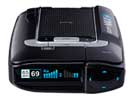
The Escort Max 360, without question, is the best dash mounted radar detector that I have ever laid my hands on!
The
main benefits of the
Escort Max 360 are its extreme range, directional information, the ability to
filter the latest K-band automotive collision avoidance systems, and a super fast response rate to
detect even the slightest radar threats.
The Escort Max 360 is also
a GPS radar detector which will alert you to fixed photo enforcement
cameras, has the AutoLearn feature to filter out known false alert
locations, and variable speed sensing to automatically adjust its
sensitivity based upon your driving.
Remote Installed Radar Detectors
Under $900 category
Escort 8500ci Plus Radar Detector:
The Escort 8500ci Plus is basically a remote version of the Escort 8500 x50 radar detector.
It is a long-range radar detector with good filtering capabilities.
The main benefit of the 8500ci is that it is a remote mounted detector and is very easy to install.
Under $1300 Category
Beltronics STiR Plus:
The
Beltronics STiR Plus is designed for professional drivers and
road warriors who need a stealth radar detector that is both stealth to
all RDDs (radar detector detectors) and to the eye.
The
Beltronics STiR Plus is basically the same radar detector as the more
expensive Escort 9500ci, without the Laser ShifterPro laser jammers.
Under $2000 Category:
Escort Passport 9500ci:
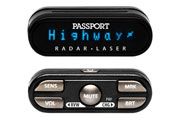
For those who demand the best in both radar detection and laser jamming we have the Escort 9500ci with the Laser ShifterPro.
The
9500ci radar detector is a remote mounted radar detector which is stealth to both the eye and all RDDs (Radar Detector Detectors).
The
newest version of the 9500ci also includes a pair of
Escort’s new Laser ShifterPros, which is based upon the design of the proven Laser
Interceptor laser jamming system.
Back To Top
Radar Roy’s Top Laser Jammer Picks
Did you know that your radar detector by itself is completely worthless in detecting laser? – Radar Roy
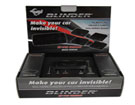
Because of its compact size and ease of install, my number one pick in the laser jammer category is the Blinder HP-905.
The Blinder also comes in 4 versions:
- Single Head: Will provide full frontal protection for motorcycles - $449.00
- Dual Version: Will provide ample frontal protection on standard size
cars and mid size SUVs. On motorcycles it will provide full front and rear
protection -
$599.00
- Triple Version: Will provide ample frontal protection on larger SUVs
and cars. Recommend placement of third head near license plate -
$749.00
- Quad Version: Will provide ample front and rear protection on standard size cars, mid size SUVs - $899.00
In late 2013, Escort teamed up with Laser Interceptor to develop Escort’s newest laser jammer: the Laser ShifterPro.
The result is superior laser jamming performance with a name you can trust, Escort Inc.
If
you have found this section helpful in selecting the radar detector
that is BEST for YOU, then I strongly recommend that you download my
more in-depth guide, 2014 Radar Detector Buyers Guide that I offer as my
free gift to members of my V.I.P. Group.
Back To Top